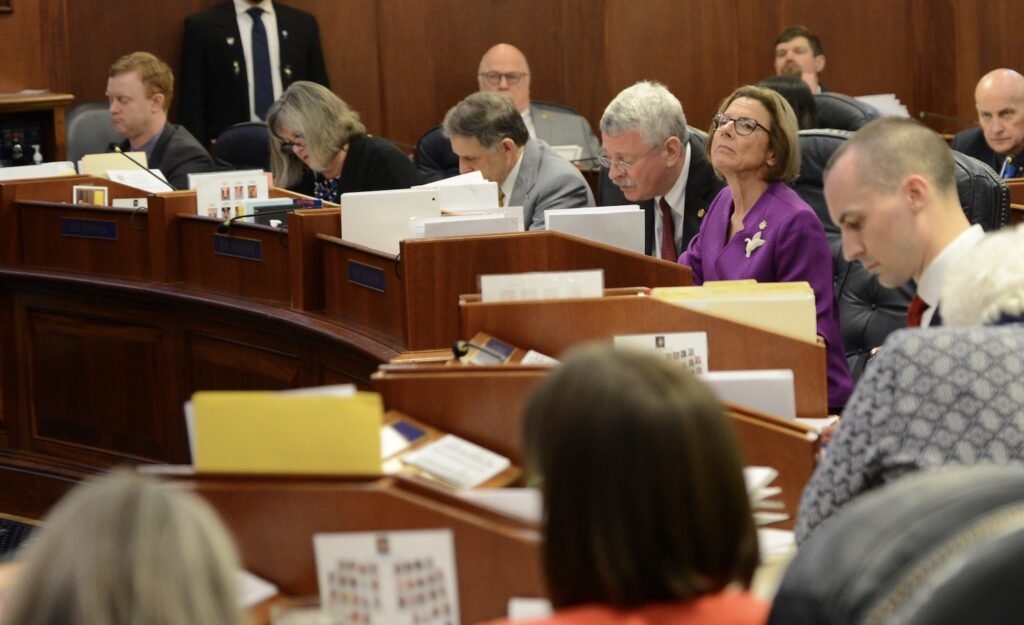Senate Majority Leader Cathy Giessel, R-Anchorage, watches the voting board during a joint session on confirmations, Tuesday, May 9, 2023, at the Alaska State Capitol. (Photo by James Brooks/Alaska Beacon)
At the beginning of Alaska’s legislative session, many veteran lawmakers worried about the infusion of untested legislators. Yet in a sharp departure from recent sessions, both sides of the aisle were patting themselves on the back for what they had accomplished after adjourning.
With 20 new legislators, or one-third of the Senate and House, the older, more experienced lawmakers had legitimate concerns, but the newbies helped lead the way to compromise. Then there were former lawmakers who lost under the closed primary system of voting, but were re-elected under ranked choice voting and played crucial roles in the legislature. Senator Cathy Giessel, R-Anchorage, is a prime example.
Ranked choice voting has finally allowed voters a better choice than the closed primary system. When the Republican party came up with an untested Tea Party politician to replace incumbent Republican Sen. Lisa Murkowski because she didn’t always toe the party line, Murkowski subsequently ran a successful write-in campaign. She was only the second write-in candidate in a U.S. Senate race to do so. She now has a powerful voice in Washington, even though she is in the minority, because she is willing to cross party lines.
Like many other Alaskans, I was initially skeptical of RCV, but I now am fully onboard. The election of the first Native Alaskan, and first woman, to represent Alaska in Congress was a deciding moment. Rep. Mary Peltola came out of nowhere and it’s only because of RCV.
The emergence of a 17-3 bipartisan coalition in the Senate was another sign Alaska politics is slowly moving toward the middle. Composed of nearly equal numbers of Republicans and Democrats, the coalition adopted and followed a moderate agenda. In contrast, the bipartisan coalition in the House was dominated by conservative Republicans but added three members of the Bush Caucus to provide a majority of votes in the closely divided body. Lacking the balance of the Senate coalition, the House ended up struggling throughout the session.
Under the closed primary system, Republican party leaders held enormous power over the outcome of who is chosen to run and how the money is spent. RCV provides a path where the parties have limited influence in choosing who will run for office but still can decide who gets funding to help during the elections.
RCV has already helped Alaskans elect more moderate legislators and will do more to change the face of politics in Alaska if the petition to repeal it is rejected. A return to the system that put Joe Miller on the ballot instead of Lisa Murkowski…is a return to the bad old days in Alaska politics.
GET THE MORNING HEADLINES DELIVERED TO YOUR INBOX
The post How ranked choice voting is bringing Alaska politics back to the center appeared first on Alaska Beacon.

